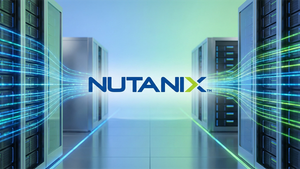
The cryptocurrency landscape is undergoing a profound transformation, shedding its "Wild West" image to embrace a future defined by regulatory clarity and institutional integration. Across major global economies, a concerted effort to establish comprehensive legal frameworks for digital assets is not only bringing much-needed stability but is also acting as a powerful magnet for institutional capital. This pivotal shift, spearheaded by landmark legislation in the U.S. and Europe, alongside proactive measures in South Korea, signals a new era where digital assets are increasingly viewed as legitimate and investable components of the global financial system. The immediate implication is a burgeoning confidence among large-scale investors, paving the way for unprecedented capital inflows and a more mature, less volatile crypto market.
A Regulatory Tsunami: What Happened and Why It Matters
The past few months have witnessed a flurry of legislative and regulatory activity, marking a decisive pivot from an enforcement-led approach to one focused on establishing clear, predictable rules for digital assets. This shift is critical because it addresses the primary concern that has historically deterred institutional participation: regulatory uncertainty.
In the United States, the legislative gears have been turning rapidly. On July 18, 2025, President Trump signed the GENIUS Act (Guaranteeing Essential National Infrastructure in US-Stablecoins Act of 2025) into law. This groundbreaking legislation is the first comprehensive federal framework specifically for stablecoins, mandating that they be fully backed by high-quality liquid assets and requiring monthly public disclosures of reserve compositions. It also prohibits the offering of yield or interest payments to holders and designates the Office of the Comptroller of the Currency (OCC) as the primary regulator for federally registered stablecoins. This act, expected to take full effect by January 18, 2027, is a monumental step towards consumer protection, maintaining the U.S. dollar's global dominance, and bolstering national security.
Hot on its heels, the CLARITY Act (Digital Asset Market Structure Clarity Act of 2025) passed the U.S. House of Representatives on July 17, 2025. This bill aims to resolve the long-standing jurisdictional ambiguity between the Securities and Exchange Commission (SEC) and the Commodity Futures Trading Commission (CFTC). It proposes that digital assets qualifying as securities fall under SEC oversight, while "digital commodities" like Bitcoin and Ethereum, if sufficiently decentralized, would be regulated by the CFTC. The CLARITY Act also introduces requirements for Qualified Digital Asset Custodians (QDACs), mandating asset segregation. While awaiting Senate consideration, its passage in the House signals a strong bipartisan desire for a clearer regulatory landscape. Concurrently, the Anti-CBDC Surveillance State Act, also passed by the House on July 17, 2025, seeks to prohibit the Federal Reserve from issuing a central bank digital currency (CBDC) directly to individuals, reflecting concerns about financial privacy and potential government surveillance. Its future in the Senate remains less certain.
Beyond legislation, the SEC's Crypto Task Force, spearheaded by Commissioner Hester Peirce, has shifted its focus from a purely enforcement-driven approach to one of collaborative regulatory development. The task force's ongoing 10-city tour across the U.S. (August to December 2025) to gather feedback from industry stakeholders, particularly early-stage crypto startups, underscores a newfound willingness for open dialogue and a more inclusive regulatory process.
Across the Atlantic, Europe continues to lead with its pioneering MiCA (Markets in Crypto-Assets) Regulation. Having entered into force in June 2023, MiCA fully applies from December 30, 2024, with provisions for Asset-Referenced Tokens (ARTs) and Electronic Money Tokens (EMTs) already in effect since June 30, 2024. This landmark regulation establishes a harmonized, pan-European licensing and supervisory regime for crypto-asset service providers (CASPs) and issuers, covering everything from exchange tokens to utility tokens. MiCA's emphasis on transparency, disclosure, authorization, and supervision has positioned it as a global benchmark for comprehensive crypto regulation, widely praised by the crypto community and international jurisdictions alike.
Meanwhile, South Korea is actively preparing to integrate institutional players into its crypto market, marking a significant policy reversal after years of stringent regulations. The Financial Services Commission (FSC) is set to unveil institutional crypto investment rules by Q3 2025, with a phased rollout commencing in April. These rules will permit professional investors, public companies, and charities to trade cryptocurrencies in a regulated environment. New guidelines, finalized on May 20, 2025, and effective in June, include stricter listing standards for exchanges and rules for nonprofit crypto sales. Furthermore, the Bank of Korea (BOK) announced the establishment of a Crypto Assets Department on July 30, 2025, to monitor crypto markets, stablecoins, and related legislation, signaling a strategic embrace of digital finance.
The Shifting Sands: Winners and Losers in the New Regulatory Landscape
The advent of clear regulatory frameworks is poised to create distinct winners and losers within the digital asset ecosystem, fundamentally reshaping competitive dynamics and market structures.
Among the clear winners are regulated stablecoin issuers. Companies like Tether (private) and Circle (private), the issuer of USDC, stand to benefit immensely from the clarity provided by the GENIUS Act. By adhering to strict backing requirements and transparency mandates, these entities can solidify their legitimacy, potentially expanding their market share and attracting greater institutional trust. The ability to operate under a clear federal framework reduces operational risk and opens doors to broader integration with traditional financial systems.
Established crypto exchanges and custodians are also positioned for significant gains. Platforms such as Coinbase (NASDAQ: COIN) and Binance (private), which possess the resources and infrastructure to meet stringent regulatory requirements like those for Qualified Digital Asset Custodians (QDACs) under the CLARITY Act or the licensing demands of MiCA, will gain a substantial competitive advantage. Their ability to offer compliant services will attract the influx of institutional capital seeking secure and regulated avenues for digital asset exposure. This regulatory moat will likely lead to consolidation, as smaller, less compliant players struggle to keep pace.
Furthermore, traditional financial institutions are emerging as major beneficiaries. Global asset managers like BlackRock (NYSE: BLK) and Fidelity (private), along with major banks, have been cautiously eyeing the crypto space. With regulatory clarity, the path to offering crypto-related products—such as spot Bitcoin ETFs, custody solutions, and lending services—becomes significantly clearer and less risky. This enables them to cater to growing client demand while adhering to their existing compliance obligations, effectively bridging the gap between traditional finance and the burgeoning digital asset economy. Ultimately, institutional investors themselves, including pension funds, hedge funds, and endowments, are the ultimate winners, gaining access to a new asset class with reduced counterparty risk and enhanced legal certainty.
Conversely, the new regulatory environment will inevitably create losers. Unregulated or non-compliant crypto projects and exchanges face an existential threat. Those unwilling or unable to adapt to the new standards, particularly regarding KYC (Know Your Customer) and AML (Anti-Money Laundering) protocols, will find themselves marginalized, cut off from institutional liquidity, or even forced out of the market. This includes smaller, less capitalized exchanges that cannot afford the significant compliance costs.
While not directly targeted, certain decentralized finance (DeFi) protocols might face indirect pressure. As institutional capital flows predominantly into regulated avenues, DeFi projects may need to consider some level of "institutionalization" or face isolation from mainstream adoption. The emphasis on transparency and identifiable entities in the new regulations could also pose challenges for privacy-focused cryptocurrencies and protocols, which prioritize anonymity, potentially limiting their appeal in a highly regulated institutional environment.
Industry Impact and Broader Implications: A Maturing Market
These regulatory developments signify a profound maturation of the digital asset industry, moving it beyond its speculative, retail-dominated origins towards becoming a legitimate and integrated component of the global financial system. This shift is not merely incremental; it represents a fundamental re-architecture of how digital assets are perceived, traded, and managed.
The most significant broader trend is the accelerating integration of digital assets into traditional finance. The establishment of clear custody standards, asset segregation requirements, and robust AML policies, as seen in the GENIUS Act and CLARITY Act, aligns crypto practices with established financial norms. This convergence is expected to drive up capital inflows from institutions, leading to enhanced liquidity, reduced volatility, and overall market growth. The approval of in-kind creation and redemption mechanisms for crypto ETFs, alongside legislation like the GENIUS Act, further enhances operational efficiency, making these products more attractive to institutional investors.
The ripple effects will be felt across the entire financial ecosystem. We can anticipate increased mergers and acquisitions (M&A) activity as larger, compliant entities acquire smaller players to expand their market reach or technology stacks. There will also be a surge in demand for specialized compliance, legal, and cybersecurity services within the crypto sector, creating new professional opportunities. The regulatory frameworks will also foster greater interoperability between traditional financial infrastructure and blockchain networks, paving the way for innovative hybrid financial products.
From a regulatory and policy perspective, Europe's MiCA has already set a global precedent, and the U.S. is now rapidly catching up, demonstrating a bipartisan commitment to establishing a robust framework. This could lead to greater global regulatory harmonization, as other jurisdictions look to these comprehensive models. The U.S. approach, particularly the jurisdictional clarity sought by the CLARITY Act, could serve as a blueprint for how different regulatory bodies (e.g., securities vs. commodities regulators) can effectively oversee digital assets. Historically, the evolution of new asset classes, from derivatives to mortgage-backed securities, has always been accompanied by a period of regulatory catch-up, and crypto is no different. This current phase mirrors the early days of internet regulation, where initial uncertainty gave way to frameworks that enabled massive growth and innovation.
What Comes Next: Navigating the New Frontier
The immediate future of the crypto market will be defined by the implementation and adaptation to these new regulatory realities, setting the stage for both short-term adjustments and long-term strategic shifts.
In the short-term, market participants will closely watch the full implementation of MiCA in Europe and the GENIUS Act in the U.S. Companies will be racing to achieve compliance, secure necessary licenses, and adapt their operational models. The U.S. Senate's consideration of the CLARITY Act and the Anti-CBDC Surveillance State Act will also be a critical focal point, as their passage would further solidify the regulatory landscape. The feedback gathered by the SEC's Crypto Task Force will likely inform future regulatory guidance and enforcement priorities, offering a glimpse into the agency's evolving stance.
Looking to the long-term, these regulatory developments are expected to catalyze the deeper integration of crypto into mainstream finance. We can anticipate the proliferation of new, regulated financial products, including more diverse crypto ETFs, structured products, and lending platforms that leverage digital assets. This will likely lead to a more sophisticated and mature market, attracting an even broader spectrum of institutional investors.
For companies operating in the crypto space, strategic pivots and adaptations will be paramount. This includes significant investments in compliance infrastructure, legal expertise, and robust cybersecurity measures. Firms that can demonstrate a commitment to regulatory adherence will gain a competitive edge, attracting institutional partners and clients. This may also lead to a consolidation of the industry, as smaller, less compliant entities are acquired or exit the market.
The emerging market opportunities are vast, particularly for firms specializing in institutional-grade custody, prime brokerage services, and compliant DeFi solutions. However, challenges will also arise, including increased operational costs due to compliance, and potentially higher barriers to entry for new startups. The regulatory clarity, while beneficial for growth, also means less room for the "move fast and break things" ethos that characterized crypto's early days.
Potential scenarios include a "flight to quality," where institutional capital disproportionately flows into assets and platforms operating under clear regulatory oversight, potentially leading to a divergence in performance between regulated and unregulated segments of the market. Ultimately, the goal is a more stable, less volatile crypto market that can withstand economic shocks and attract sustained, long-term investment.
Conclusion: A New Dawn for Digital Assets
The recent wave of regulatory developments across the U.S., Europe, and South Korea marks a watershed moment for the cryptocurrency industry. The overarching theme is clear: regulatory clarity is not merely a desirable outcome but the fundamental catalyst driving institutional adoption and the maturation of digital assets into a legitimate, investable asset class.
The passage of the GENIUS Act, the progress of the CLARITY Act, and the proactive stance of the SEC's Crypto Task Force in the U.S., coupled with Europe's pioneering MiCA regulation and South Korea's strategic embrace of institutional crypto, collectively paint a picture of a global financial system increasingly ready to integrate digital assets. These frameworks are building the necessary bridges of trust, predictability, and compliance that institutional investors demand, effectively de-risking the crypto space for large-scale capital allocation.
Moving forward, investors should closely monitor the ongoing legislative progress in the U.S. Senate, particularly regarding the CLARITY Act, as its passage would provide crucial jurisdictional certainty. Further guidance from the SEC and other regulatory bodies will also be key in shaping the operational landscape for crypto firms. The pace of global regulatory convergence, with jurisdictions learning from each other's frameworks, will be another important trend to watch. Finally, how existing crypto companies adapt their business models to meet these new, stringent requirements will determine their long-term viability and success in this evolving market. The era of the "Wild West" is definitively over; a new dawn of regulated, institutionalized digital finance has arrived.







